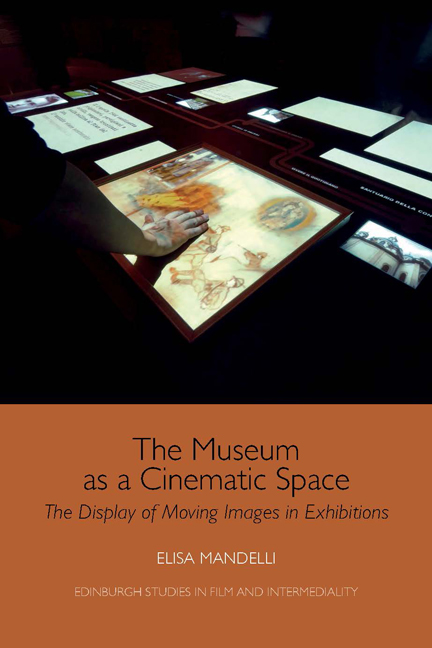Preface
Published online by Cambridge University Press: 24 October 2019
Summary
Moving images have become a common feature in museums, where visitors are now accustomed to finding a broad variety of projections and screens. But when did films start to be displayed in history, science, and natural history museums? How did visitors react to the transformation of static displays by means of moving images? And what are the current stakes of showing audio-visuals in exhibition spaces? The Museum as a Cinematic Space is an extensive investigation of the use of moving images in exhibition design outside the field of art. It explores how museums have incorporated films and audio-visuals in their displays from the beginning of the twentieth century up to the present.
From the beginning of the twentieth century, museum professionals have taken interest in the potential of the new cinematic medium, and have considered the possibility of using films as a means of exhibition. This has led over the decades to explore technological as well as conceptual solutions to integrate audio-visual devices in the gallery space. From the Mutoscopes used in the 1920s to the contemporary immersive projections, curators have had to deal with issues such as the relationship of moving images with museum objects, as well as the way in which visitor movement in space relates and intertwines with the movement of the images on the screen. Moreover, audio-visuals have repeatedly raised the problem of the balance between the serious and educational mission of the museum and the will to entertain the public, with an imbalance in favour of entertainment that today seems in many cases to define the very concept of museum.
In addition to describing the concrete solutions and strategies used by curators to exhibit films, my goal is to identify the practical, technical, and discursive conditions that enabled the use of moving images in museum galleries during the twentieth century and the twenty-first. My focus will be on the inclusion of cinematic elements (films, screens, projections, and so on) within the display. By opening itself to moving images, the exhibition becomes a place where cinema and museum spectatorships converge, reshaping the fixed relations between the public, the images, and the viewing space itself.
- Type
- Chapter
- Information
- The Museum as a Cinematic SpaceThe Display of Moving Images in Exhibitions, pp. ix - xiiPublisher: Edinburgh University PressPrint publication year: 2019



